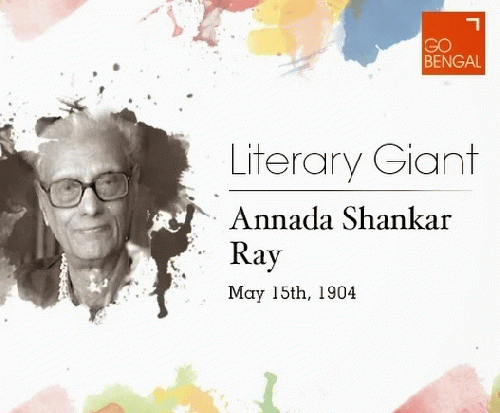Coal mines, tea estates, college classes, office spaces
Chairs, tables, fixtures, wall clocks and book cases
Peons who labor at odd jobs, police who keep the peace
Even professors imparting knowledge, pushed over the precipice
Warships, fighter planes, battle tanks and armored cars
Rocket launchers, camels and horses, these too you grown-ups parse
Taking apart and divvying up, looting but a work of art
Well, what then? What then? What then?
COMMENTARY:
The Bengali novelist, poet and social commentator, Annada Shankar Roy (1904-2002), ASR, last name alternatively spelled Ray, lived right through the most intense years of the Indian struggle for liberation from British colonial rule. While that struggle historically dates back to the mid-1700s, beginning with the occurrence and aftermath of the infamous Battle of Plassey (1757), and a century later, the historic Sepoy Mutiny (1858) leading to the subcontinent coming under British imperial rule- it was after the annulment of the original Partition of Bengal proposal put forth by Lord Curzon, in 1905, accompanied by extensive popular action and demonstrations across Bengal (then undivided) which created the greatest ferment around the nation in terms of fighting against the colonial oppression with a united front across ethnic and religious boundaries. Even before Gandhi, upon his return from South Africa, took over the primary political lead of the movement, figures such as the peerless poet and philosopher, Rabindranath Tagore, had already offered up highly effective yet hauntingly simple verses highlighting people's innermost desires and defiance of official edicts of divisiveness.
Tagore's history-making role in walking the streets of
Bengal in the effort to bring all of Bengal's brothers and sisters together in
communal harmony defying the official edict is especially memorable for the
song,
The subject of politically and geographically engineered partitions of a people, usually an outcrop of purely racist colonial machinations (whose evidence is scattered across the world to this day), is understandably vast and has uncountable shades of interpretations. Not surprisingly, the partition of India, and specifically of Punjab and Bengal (two provinces which in my judgment exhibited some of the most intense protests against British colonial occupation of India, and perhaps for that reason alone, were in the cross-hairs of the colonial masters for a back-handed retribution when finally withdrawing from the zone of two centuries of relentless exploitation and loot, including the creation of a ghastly famine in Bengal in 1942) has been portrayed and discussed in a great many literary and socio-cultural tracts.
In this article, I shall attempt to provide some
contextual perspectives by simply limiting myself to the socio-political implications
scattered across the apparently innocuous nursery rhyme of the Bengali author,
thinker and avant-garde progressive poet, Annada Shankar Roy (1904-2002). It is known that as with many other noted
authors and creative artists (including the path-breaking maker of alternative
films, Ritwik Ghatak, and authors Manik Bandyopadhyay, Bonophool, Tarashankar
Bandyopadhyay, Adwaita Mallaburman, and also filmmakers Nemai Ghosh
(Chhinnamul, 1951), Shantipriya Mukherjee (Refugee, 1959), Buddhadeb Dasgupta (Tahader
Katha, 1992), Tanvir Mokammel (Chitra Nadir Pare, 1999), and documentary maker
Supriyo Sen (Way Back Home, 2002)), Annada Shankar Roy also expressed his
opposition to and dismay at the disfiguring and destructive trauma of
Objectively speaking, while rendering a serious
subject such as the lasting bruise and trauma of an ethnic and geographic
partition and the associated immeasurable human cost in a children's nursery
rhyme may appear to be the use of a relatively lightweight medium, I would
consider it in fact a rather brilliant use of a forum which relatively easily
enters into the psyche of a populace. It
is in the same vein as, say, the lasting effectiveness of a folk-rendering of
the tragic lore associated with the hanging of the (virtually) child-martyr,
Khudiram Bose (1889-1908) on the British gallows well ahead of the Gandhian
era. This deeply moving song ("ekbar
bidaye de Ma ghure aashi") of a
Of special note here is the clear layering of partitioning and divisionism laid out in casual tones in ASR's anti-partition rhyme. Of course, to set the tone for the rhyme, he first places the grown-up world up for accountability for their seemingly childish, yet infinitely more destructive behavior in literally breaking up entire communities of people at will, and yet moralizing little children for minor infractions or accidents. This is an indictment of clearly pre-meditated and ultimately immoral adult behavior.
(Note: You can view every article as one long page if you sign up as an Advocate Member, or higher).






